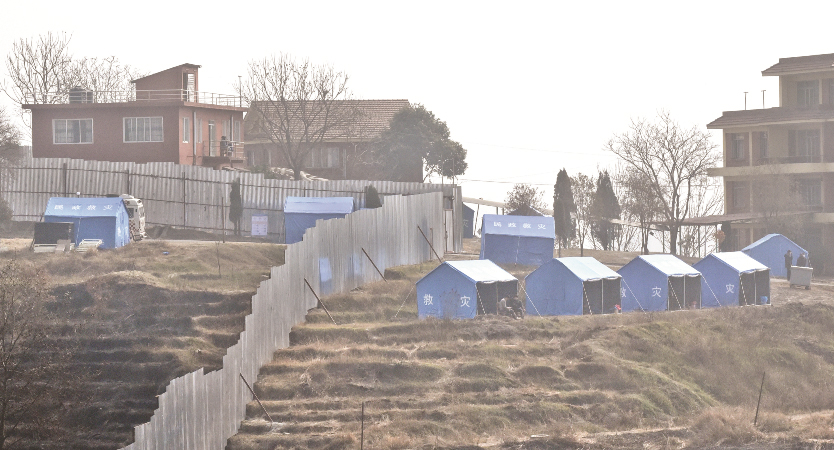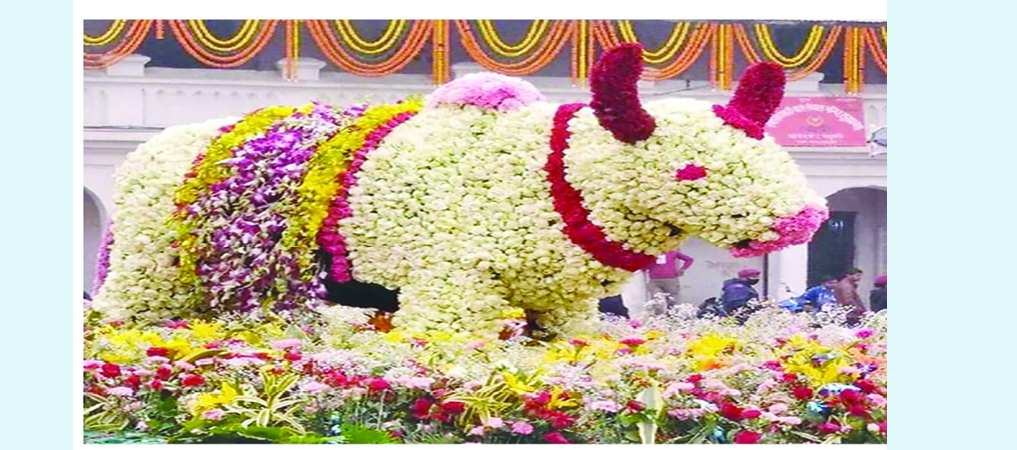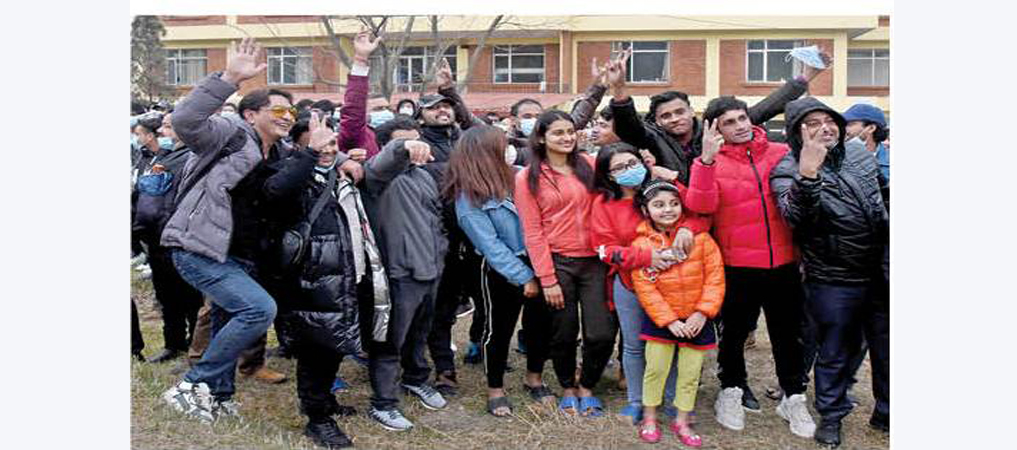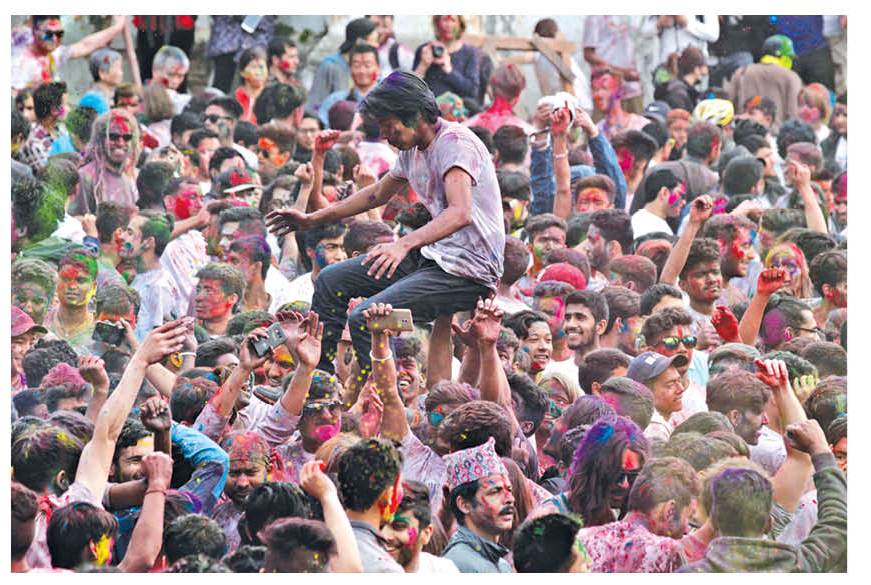Swarms of locusts enter Kathmandu
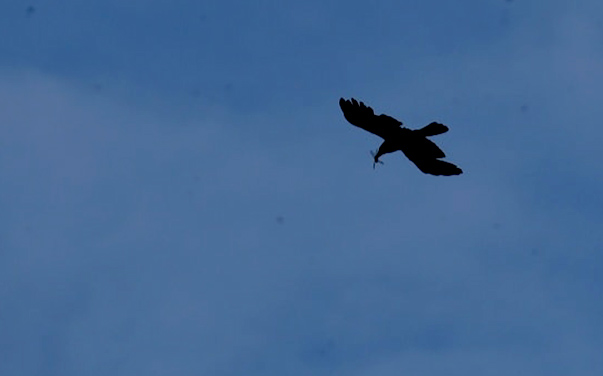
By Sampada Anuranjanee Khatiwada
Kathmandu, July 1: The weather in Kathmandu was clear with clear sky on Tuesday despite the gloomy monsoon season. And swarms of locust were there to cover the clear sky above Kathmandu.
Although locusts in few numbers were seen in the Kathmandu Valley from Saturday, the green-eating insects of different groups were seen flying high in the sky on Tuesday.
The Kathmanduites seemed excited to have witnessed locust swarms, which is a historic episode per se. They were seen looking up in the sky and capturing the flying insects in their mobile phones.
Huge groups of locusts were seen in Raniban, Banasthali, Balaju, Swoyambhu, Gongabu and New Road area.
"I had only heard my grandparents talking about how all the crops were destroyed by the locusts around 80 years ago," said Ramesh Raj Kunwar, who had stopped his motorcycle to witness the insects hovering above his head in Balaju.
"The group of locusts seen from is somewhat thinner than what is shown in the news. I hope the numbers won't increase in the coming days and affect the farmers, who are already facing hardships due to the COVID-19 pandemic," added Kunwar.
Even though people, especially farmers have been worried about the possible damage of crops by the flying horde, the crows seemed to be enjoying the locust feast for a change.
Not only the crows but also some denizens were also seen to be keen to taste the delicacies of the locusts.
"I was around 12/13-year old when the locusts had attacked Nepal. It was around 89/90 years ago," Satya Mohan Joshi, 101, a culturist, said. "People used to boil the locust then. The locust meat must have been delicious as a lot of people used to buy it. The locust plight had somewhat been a source of income to a lot of people."
Culturist Joshi recalled that the swarm of insects had damaged all the crops, plants and trees. They used to fly in such a huge number that even the sun could not be seen during day time."
Significant damage of crops however has not been recorded in Kathmandu yet.
Sahadev Prasad Humagain, chief of Plant quarantine and Pesticide Management Centre, said the locusts entered Kathmandu from Lalitpur and moved towards Nagarjun crossing the Swayambhunath temple. He said, "A huge horde of locusts entered the valley from south at around 4:00 PM on Tuesday. The group got dispersed and some were seen moving towards Nagarjun jungle while others were returning to Lalitpur."
"Agriculturists across the country are currently studying the behaviour of locusts. According to the primary research, along with the flow of wind, the locusts are trying to return to their natural habitat," said Humagain.
"The swarms of insects seen in Nepal are seemed to be resting after flying for one to two hours," added Humagain. "They usually hold the capacity of flying for around 12 hours a day, covering 10-15 kilometers."
Stating that although weather and environment of Nepal was not favourable for locusts, Humagain called everyone to be alert and opt for preventive measures against locust plight.
The horde can fly to any direction, depending upon the flow of wind. Thus, everyone should remain alert at the moment, he said.
Recent News

Do not make expressions casting dout on election: EC
14 Apr, 2022
CM Bhatta says may New Year 2079 BS inspire positive thinking
14 Apr, 2022
Three new cases, 44 recoveries in 24 hours
14 Apr, 2022
689 climbers of 84 teams so far acquire permits for climbing various peaks this spring season
14 Apr, 2022
How the rising cost of living crisis is impacting Nepal
14 Apr, 2022
US military confirms an interstellar meteor collided with Earth
14 Apr, 2022
Valneva Covid vaccine approved for use in UK
14 Apr, 2022
Chair Prachanda highlights need of unity among Maoist, Communist forces
14 Apr, 2022
Ranbir Kapoor and Alia Bhatt: Bollywood toasts star couple on wedding
14 Apr, 2022
President Bhandari confers decorations (Photo Feature)
14 Apr, 2022







